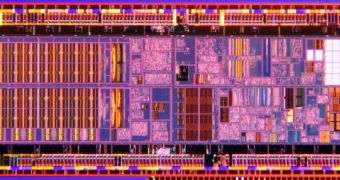Many SFF and silent computing enthusiasts are eagerly waiting for Intel to upgrade its Atom line of CPUs and the corresponding platforms, but the company doesn’t seem to be ready with the new 22 nm chips. The current Atom processors are manufactured in 32 nm technology and have considerably lower performance than AMD’s Brazos 2.0 APUs.
Some of us were wondering why AMD would name Brazos 2.0 a platform upgrade, when it only brings USB 3.0 support in some case and less than 5% faster APUs. The simple reason for this seems to be the fact that the competition isn’t doing any better, so there’s no reason for AMD to dedicate resources towards this sector.
The Texan fabless CPU designer already rules 44% of the low- to mid-end desktop market using Llano and Brazos as the fighting tools, and if Intel is not able to bring anything better on the battlefield, AMD is not going to reach for the aces up its sleeve.
It seems like the semiconductor giant has been too busy working on its smartphone Atom version and that the rest of the market sectors were pretty much ignored.
The smartphone initiative proved to be a complete failure for Intel as the “latest and greatest” Atom chip from the company is only able to fight last year’s competition and, by the time the next generation will be launched, the ARM competition will be two generations ahead.
We don’t really see the reason for Intel to neglect the Atom market completely in 2012 and most of 2013, but this may have to do with the fact that the company’s low power 22 nm manufacturing is not yet ready and that there is no point in launching faster Atoms if the iGPU performance would be inferior to AMD’s APUs.
The main improvement in the true next-generation Atom SoC will be the iGPU.
Sure, there will be quad-core SoCs because the 22 nm manufacturing would allow such density on a small die size, but the main concern for Intel was graphics performance and that’s exactly were Intel did most of the work.
The slides uncovered by hardware experts at EXPreview show that Intel plays down the x86 performance improvement saying that it’s only “improved over previous generations.”
When it comes to the integrated graphics processing unit (iGPU), the company touts a 400% to 700% performance improvement, and that’s no small feat.
This puts Intel’s new Atom clearly ahead of Brazos’ 3D capabilities, and the two to four x86 cores are certainly going to perform better than AMD’s current 40 nm APUs.
The thing is that AMD is already working on a GCN-imbued Jaguar APU architecture that will likely be ready next spring, so the competition will have at least a six months head start on Intel.

 14 DAY TRIAL //
14 DAY TRIAL // 
